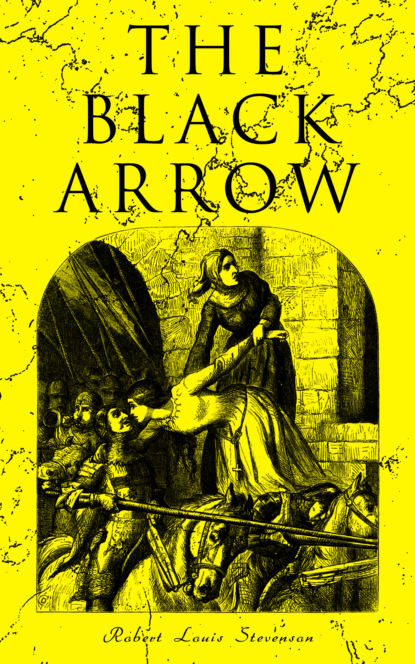ection>
Robert Louis Stevenson
The Black Arrow
A Tale of the Two Roses: Historical Adventure Novel
Illustrator: N. C. Wyeth
e-artnow, 2021
Contact: [email protected]
EAN 4064066301255
Table of Contents
Chapter I At the Sign of the Sun in Kettley
Chapter IV A Greenwood Company
Chapter V “Bloody as the Hunter”
Chapter III The Room over the Chapel
Chapter V How Dick Changed Sides
Chapter I The House by the Shore
Chapter II A Skirmish in the Dark
Chapter V The “Good Hope” (Continued)
Chapter VI The “Good Hope” (Concluded)
Chapter II “In Mine Enemies’ House”
Chapter IV In the Abbey Church
Chapter II The Battle of Shoreby
Chapter III The Battle of Shoreby (Concluded)
Chapter IV The Sack of Shoreby
Chapter V Night in the Woods: Alicia Risingham
Chapter VI Night in the Woods (Concluded): Dick and Joan
Prologue
John Amend-All
On a certain afternoon, in the late springtime, the bell upon Tunstall Moat House was heard ringing at an unaccustomed hour. Far and near, in the forest and in the fields along the river, people began to desert their labours and hurry towards the sound; and in Tunstall hamlet a group of poor countryfolk stood wondering at the summons.
Tunstall hamlet at that period, in the reign of old King Henry VI., wore much the same appearance as it wears to-day. A score or so of houses, heavily framed with oak, stood scattered in a long green valley ascending from the river. At the foot, the road crossed a bridge, and mounting on the other side, disappeared into the fringes of the forest on its way to the Moat House, and further forth to Holywood Abbey. Halfway up the village, the church stood among yews. On every side the slopes were crowned and the view bounded by the green elms and greening oak-trees of the forest.
Hard by the bridge, there was a stone cross upon a knoll, and here the group had collected — half-a-dozen women and one tall fellow in a russet smock — discussing what the bell betided. An express had gone through the hamlet half an hour before, and drunk a pot of ale in the saddle, not daring to dismount for the hurry of his errand; but he had been ignorant himself of what was forward, and only bore sealed letters from Sir Daniel Brackley to Sir Oliver Oates, the parson, who kept the Moat House in the master’s absence.
But now there was the noise of a horse; and soon, out of the edge of the wood and over the echoing bridge, there rode up young Master Richard Shelton, Sir Daniel’s ward. He, at the least, would know, and they hailed him and begged him to explain. He drew bridle willingly enough — a young fellow not yet eighteen, sun-browned and grey-eyed, in a jacket of deer’s leather,
